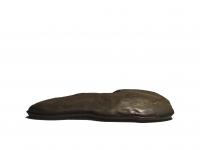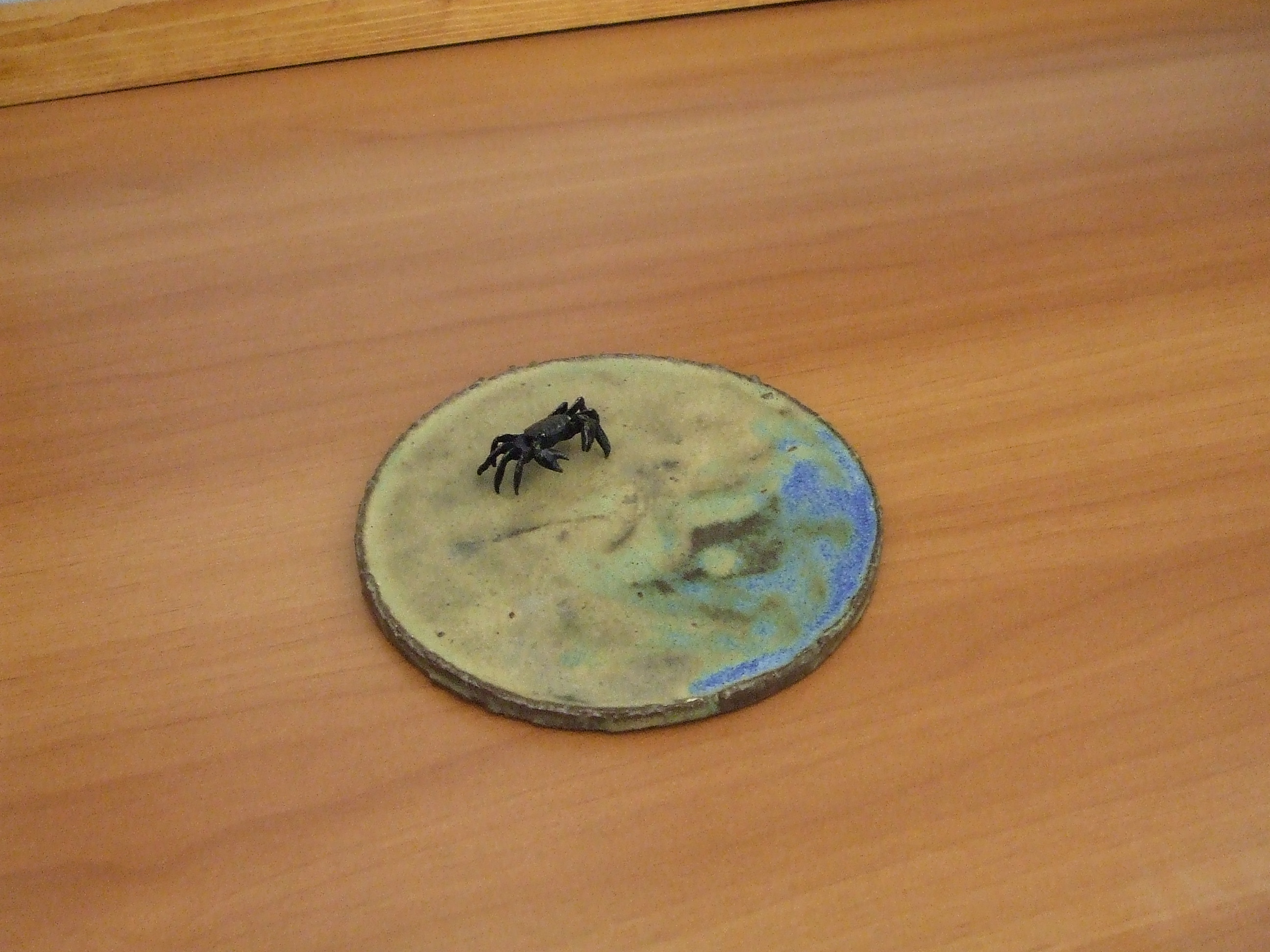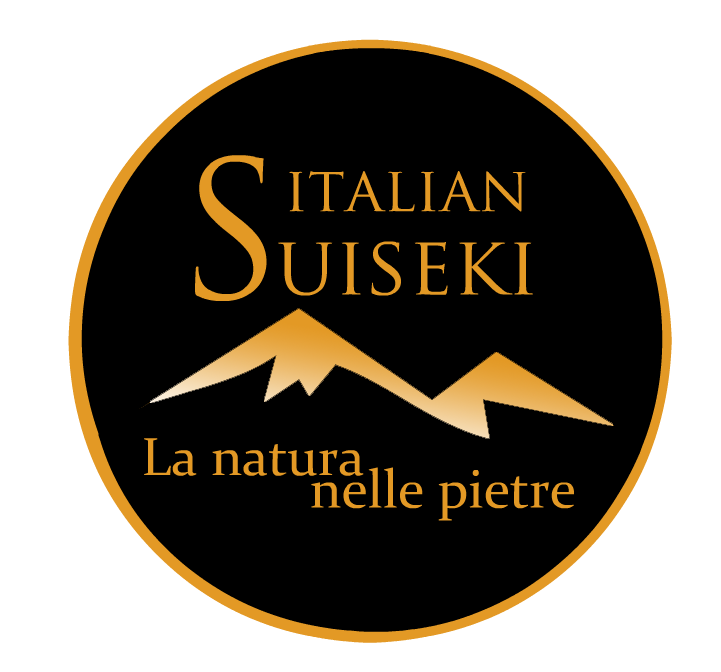
Story of a stone
by Mrs.Daniela Schifano
I begin with a quotation, without fear of being prosecuted, because I quote myself: "Every stone has many stories: its geological history, unknown to us, the history that led up to us, the history that bonds us together and that makes it special for us, the story that we will never see."
This is the story of a stone, which belonged to someone else before, and even before has been shaped by forces beyond imagination, in periods not conceivable by our senses.
Before me So, this man decided to live on with its stones: when he learned of being seriously ill, fearing that no one after him would grasp them entirely, he agreed that his stones would live on in other homes in other continents, appreciated by others eyes. He become "mountain". With me From the Kamo River in Kyoto Prefecture, from the collection of a Japanese man who practiced the art of Suiseki, came to me this thin stone, marked by a wavy surface that ranges from smooth waxy and granular, with simple and essential lines. According to its place of origin it is a Kamogawa-ishi, which was found in the Kamo River, or near it, in the prefecture of Kyoto. According to its form, it is a Shimagata-ishi, a island shaped stone. Ma bella più di tutte è l'isola non trovata, quella che il Re di Spagna s'ebbe da suo cugino, il Re del Portogallo, con firma suggellata e bulla del pontefice in gotico latino. Il Re di Spagna fece vela cercando l'isola incantata però quell'isola non c'era e mai nessuno l'ha trovata. Svanì di prua dalla galea come un'idea; come una splendida utopia è andata via e non tornerà mai più. Le antiche carte dei corsari portano un segno misterioso, ne parlan piano i marinai con un timor superstizioso. Nessuno sa se c'è davvero od è un pensiero; se a volte il vento ne ha il profumo. È come il fumo che non prendi mai! Appare a volte avvolta di foschia magica, e bella, ma se il pilota avanza su mari misteriosi è già volata via tingendosi d'azzurro color di lontananza. In this song by Mr. Francesco Guccini (himself inspired by a poem by Guido Gozzano 'The most beautiful' ) I find my thoughts beautifully condensed: here then the “pancake stone“ is given its poetic name “The unfound island”, which will also be shown during exhibitions. Together with you : the public life of a suiseki The wave runs up the narrow strip of land and seems to submerge it, so overall an image far removed from any naturalistic realism. But more than fidelity to the real I researched the loyalty to the deep meaning, but visible, the real.
After me (Published in the September issue 2009 of "Bonsai & Suiseki Magazine")

How to describe processes and times that our mind, accustomed to think in terms of biological time, almost gets lost ? Since the formation of the earth from the primordial nebula, through dramatic phenomena like ice ages, eruptions, rising and lowering of the earth's crust, drifts of land, pressures and sedimentations, elevations and erosions, each stone is a capsule of time that illustrates the progress of a dramatic journey that has lasted for hundreds of millions of years.
Whatever happened, this stone was always there, on the bank of a river of Japan, when a man, finally came on Earth, despite the arrogance and presumption with which he typically looks at nature and its works, took its presence and its beauty.
Whatever happened, this stone from a bed of a Japanese river arrived in the house of a Japanese man, who appreciated the game of shapes and colours in stones, as well as more intimate qualities: he could see the subtle signs of their transformations, the resistance, the perseverance, the patience with which they were opposed to the forces that had shaped it to build a "living" accumulation of time and events.
Any injury done by nature reminded him that the stones, despite their apparent solidity and consistency, are not immutable but are rather intended to change and transform.
Even the rocks, then, like humans, being impermanent, the cycle of life has imposed an eternal change upon them.
Evene the man, then, similar to the stones, can accept and survive the pressures of life that mold.

For me, it was at once the "pancake stone" and with this nickname I presented it to the people of the Forum, for advice on the table display most suitable for its essential lines. But I would not have spurned exposure in a suiban, in which case the discourse on the table was revised and corrected according to the size of the tray.
Obviously the word “pancake stone” would not be the poetic name of the stone: on the contrary, looking at it every day, caressing it every so often to appreciate the silky surface, looking at it in the variations of light that day and the seasons can offer, I increasingly asked: 'An island, yes, but which?'. Standing still and thinking, looking inside while eyes see a stone, allowing moments lived, suggestions, poems, music to emerge from the corner of the soul where emotions settle.
Home of mythological beings, cannibals and happy anthropologists, hideouts of pirate`s treasures, castaways launch their requests for help in the bottle, nations their atomic bombs, and now they run the risk of being submerged by rising waters.
Lost, the next day, that there is not, in fact the island is by its nature not easily accessible, evasive, elusive, but also a place of refuge from the chaos of modernity.
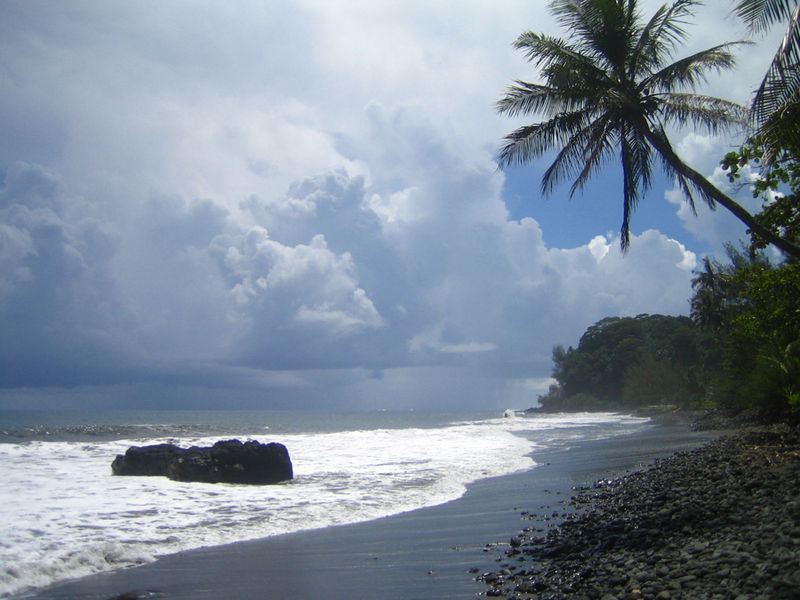
Shakespeare says: “The island is made of the same matter as our dreams, it is a physical place but also and above all imaginary, where there is space for mirages, love, adventures, legends” ... and reality shows.
Land of the myth of the Noble Savage, of Peter Pan, of Nausicaa, is the land of Utopia, the island of Sir Thomas More, inexistent place (from the greek “ou-topia”), a destination for those seeking the ultimate and never found meaning of life, but also happy place (from the greek “eu-topia”), and those who choose to sail to this island try to something very similar to happiness.
So, a happy inexistent place : but are there probably happy and existent places? Certainly not, yet to be searched, because they are the very emblem of human research, internal and not escape from everyday life to a different dimension of being, a metaphor of the human journey in search of the Absolute Truth like Eternal Love, of sense and meaninglessness of life.
Too much for a stone ?
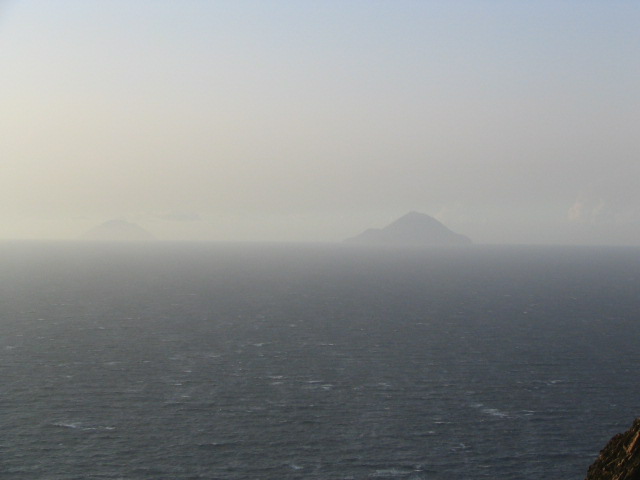
When I choose a stone, I turn it into an object of treatment, observation and assessment, and I fill with meanings that, starting from its geological nature never unknown, are also cultural, spiritual and symbolic.
For me, the exposure of a suiseki is sharing this process with other people, it is the last enhancement of a stone through sharing it with observers in a microcosm placed in the limited space of a tokonoma and in a infinite space of the emotions : challenging and perhaps unattainable goal, certainly ambitious, but equally challenging.
As complementing object, I chose a Japanese scroll called 'Wave' and a small bronze crab resting on ceramic. Overall, the scroll seems outweigh the stone, despite the exposure in a suiban recalls the immensity of the ocean.
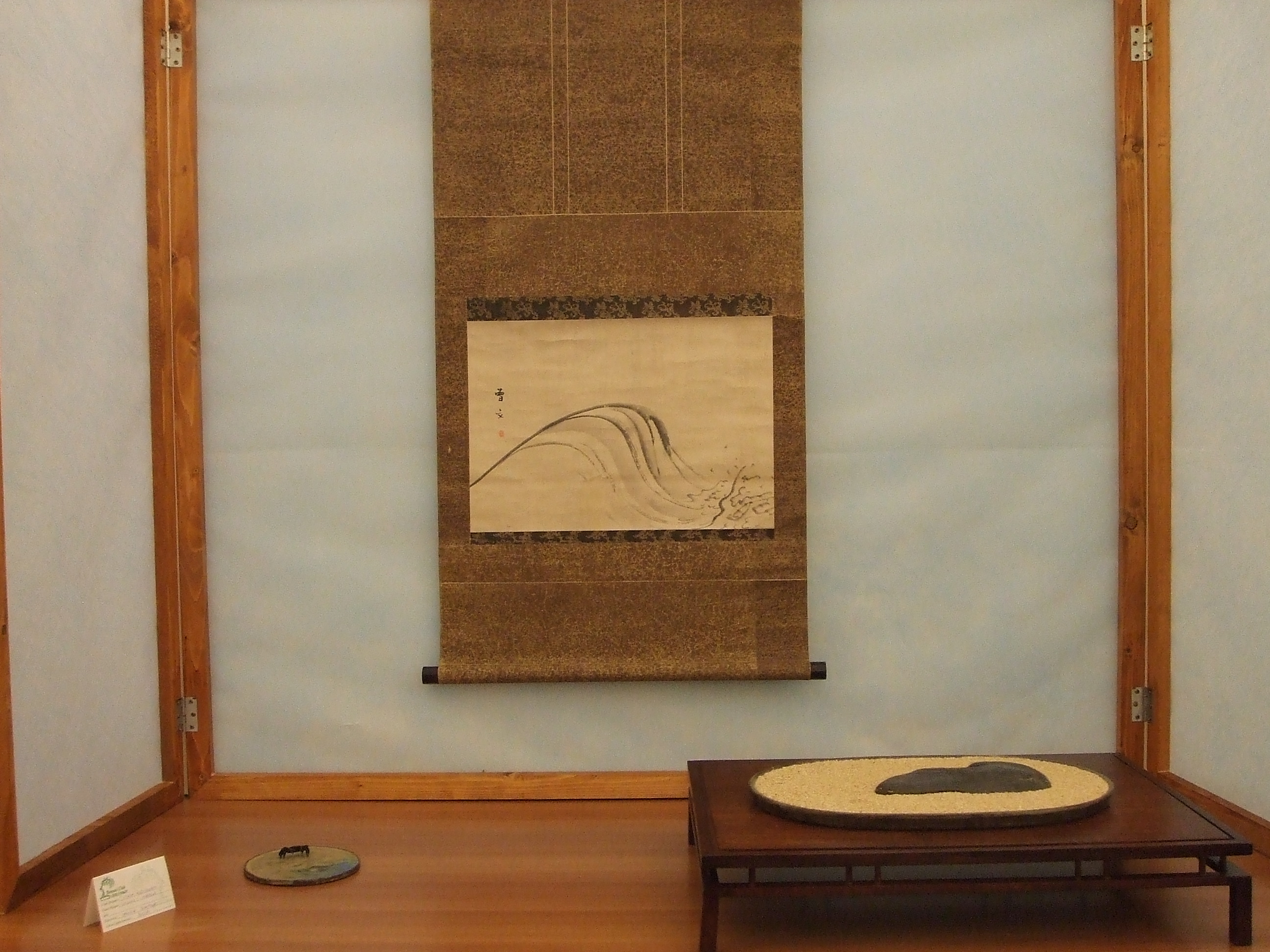
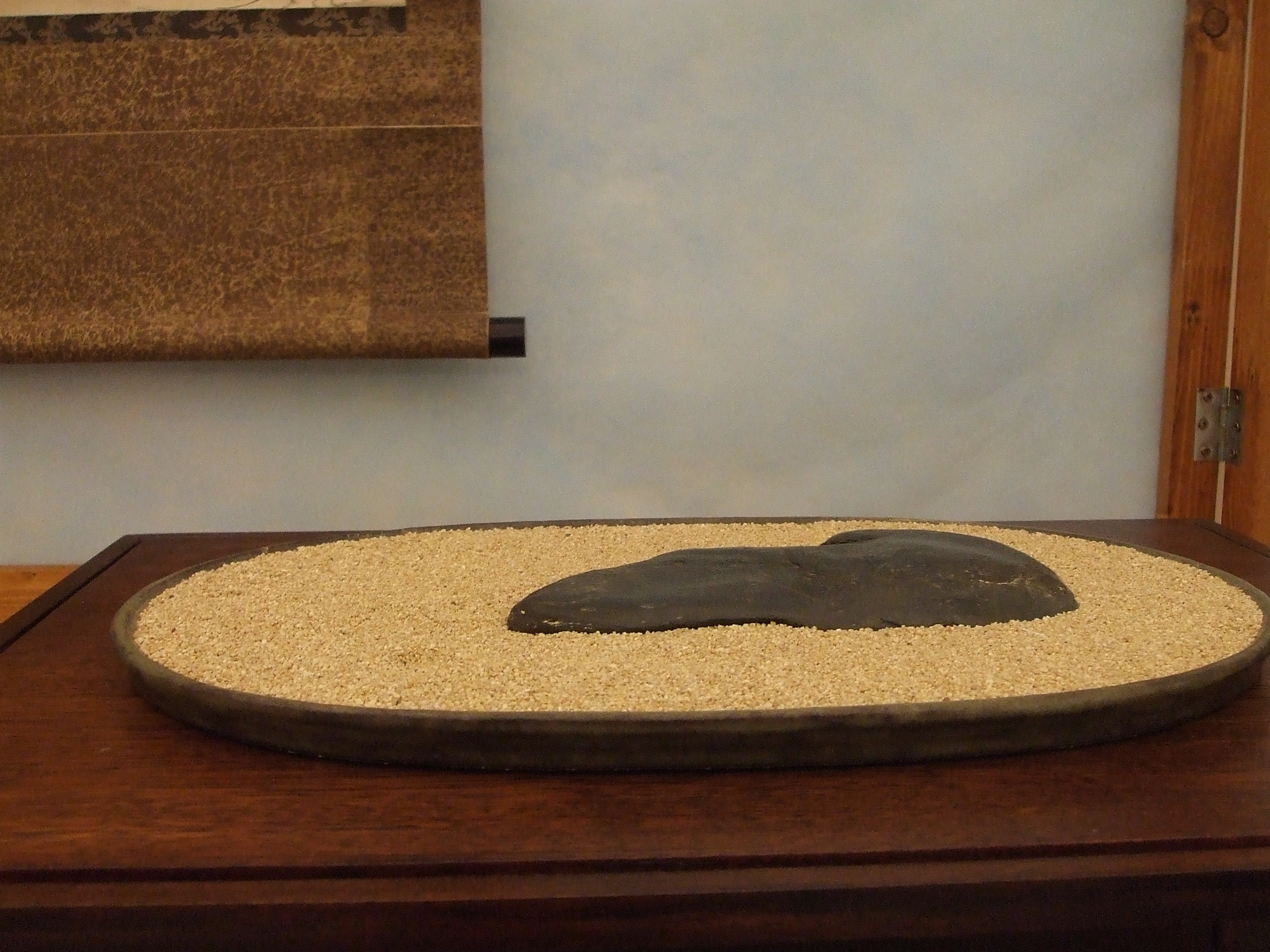
This part of the story has to be written and it isn`t me doing it, but I can try to imagine it in a game of imagination.
Maybe my son will close the “pancake stone” in a drawer.
Perhaps my son, in his maturity, will continue the game of appreciation and cultivation with the stone "The unfound island" .
Maybe my son will sell it.
Perhaps, not to take any risks, myself, like its previous owner, I will separate myself from it and I will become "mountain".
